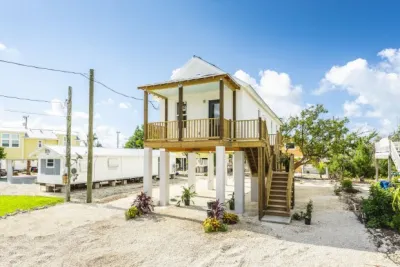A New York Times article explains and, potentially, introduces the community land trust concept, which has proven immensely capable of preventing displacement and foreclosures while advancing homeownership and racial equity.

Michael Friedrich writes about community land trusts as a corrective for skyrocketing housing costs and the displacement of families of color. "By removing land from the speculative market, [community land trusts] keep housing affordable for first-time homeowners — especially low-income people of color," according to Friedrich.
Friedrich exemplifies the potential of land trusts as an avenue to homeownership by examining the Atlanta Land Trust, founded in 2009 during the development of Atlanta BeltLine. "The Atlanta Land Trust focuses on low-income buyers who make between 60 percent and 80 percent of the local median income and can readily support a traditional mortgage," according to Friedrich. "So far, the organization has sold 15 land trust homes; it aims to build 300 by 2025."
According to Friedrich, community land trusts are rooted in the cause of racial equity. "Unlike other types of land trusts, like those formed to conserve land by restricting development, they were devised specifically to prevent the displacement of communities of color," writes Friedrich. In addition to providing a tool for racial equity, community land trusts have been show to lower foreclosure rates and prevent displacement, according to research cited in the article.
The article also describes the scope of the community land trust movement, which can be found in gentrifying neighborhoods around the country in numerous other cities besides Atlanta. The Grounded Solutions Network, for instance, has created a three-city cohort comprising Atlanta, Houston and Portland, Ore. That "shares strategies for acquiring vacant and abandoned land in an effort to scale up the land trust model."
"Encouraged by research on the benefits of community land trusts, Grounded Solutions aims to support the creation of one million new units across the country over the next 10 years," reports Friedrich.
FULL STORY: Affordable Housing Forever

National Parks Layoffs Will Cause Communities to Lose Billions
Thousands of essential park workers were laid off this week, just before the busy spring break season.

Retro-silient?: America’s First “Eco-burb,” The Woodlands Turns 50
A master-planned community north of Houston offers lessons on green infrastructure and resilient design, but falls short of its founder’s lofty affordability and walkability goals.

Delivering for America Plan Will Downgrade Mail Service in at Least 49.5 Percent of Zip Codes
Republican and Democrat lawmakers criticize the plan for its disproportionate negative impact on rural communities.

Test News Post 1
This is a summary

Test News Headline 46
Test for the image on the front page.

Balancing Bombs and Butterflies: How the National Guard Protects a Rare Species
The National Guard at Fort Indiantown Gap uses GIS technology and land management strategies to balance military training with conservation efforts, ensuring the survival of the rare eastern regal fritillary butterfly.
Urban Design for Planners 1: Software Tools
This six-course series explores essential urban design concepts using open source software and equips planners with the tools they need to participate fully in the urban design process.
Planning for Universal Design
Learn the tools for implementing Universal Design in planning regulations.
EMC Planning Group, Inc.
Planetizen
Planetizen
Mpact (formerly Rail~Volution)
Great Falls Development Authority, Inc.
HUDs Office of Policy Development and Research
NYU Wagner Graduate School of Public Service





























